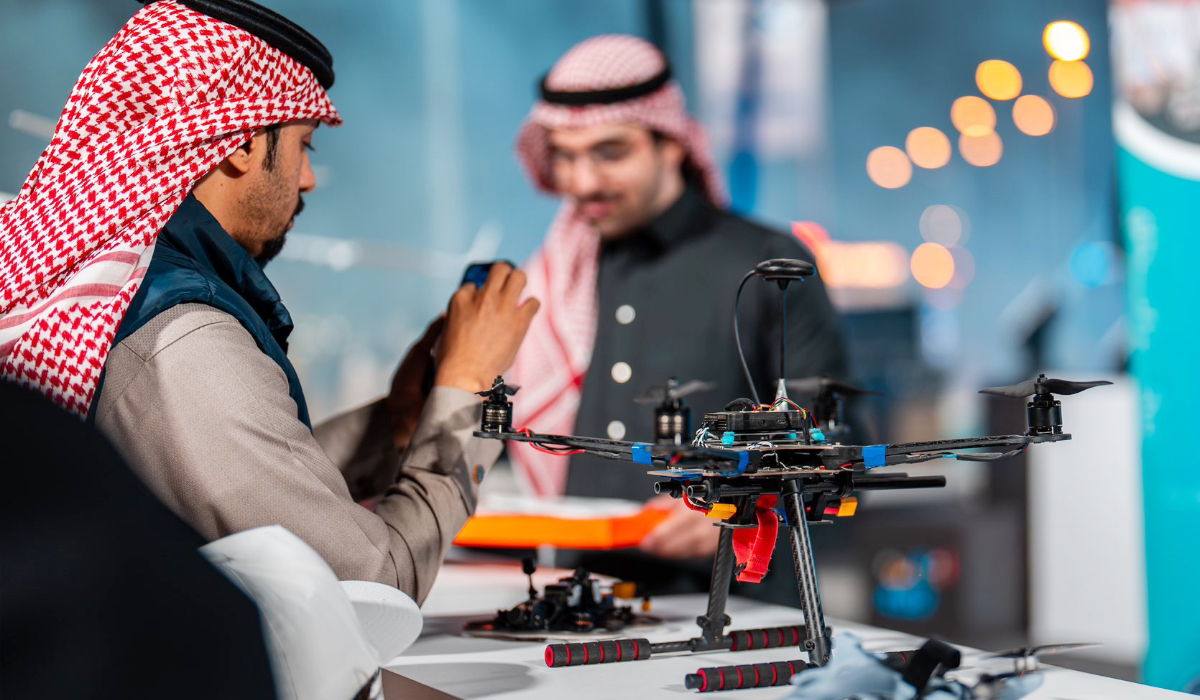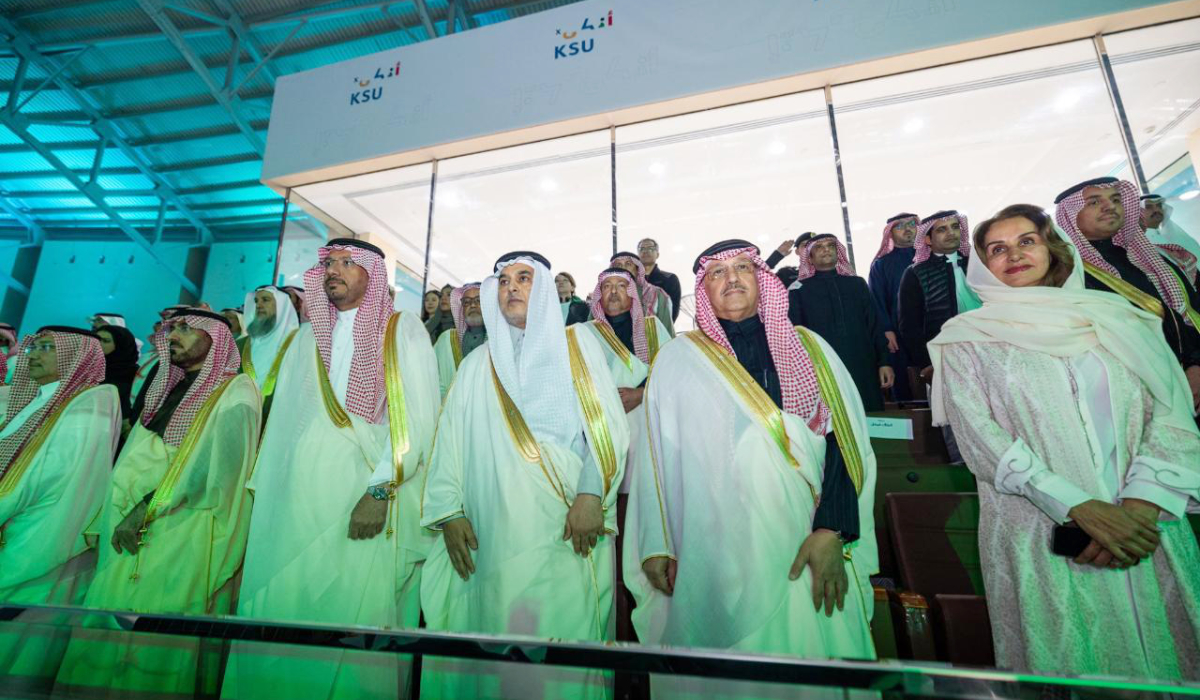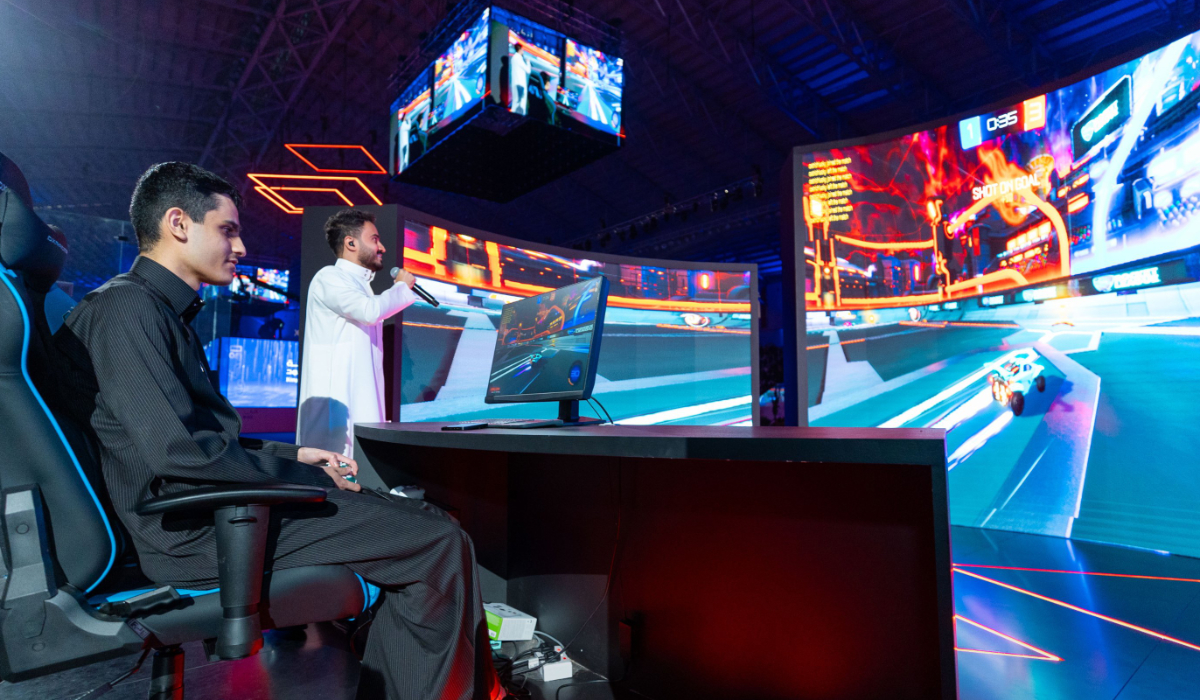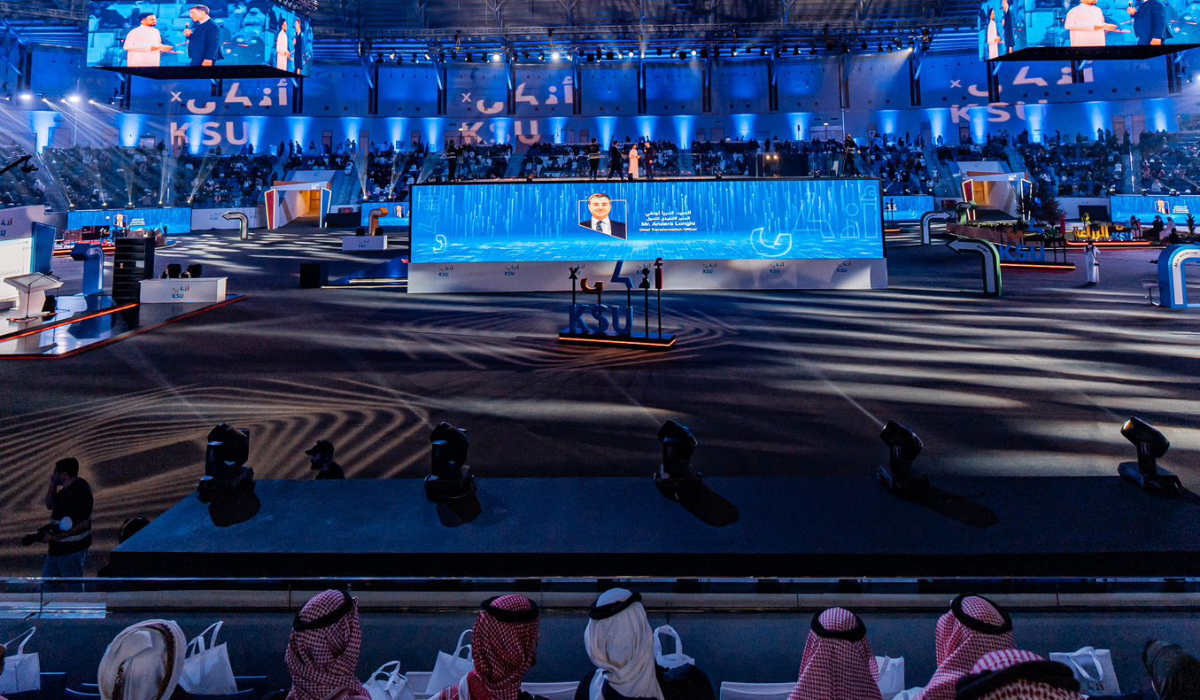RIYADH: It was a big day on Tuesday for the 65,000 spectators at the King Abdullah Sports City Stadium in Jeddah who witnessed a memorable moment — seeing their team qualify to the 2018 FIFA World Cup.
Team Saudi Arabia secured their place for the 2018 FIFA World Cup next summer by winning a 1-0 crucial match against top scorer Japan in the last AFC Round 3 Group B match. With the win, Saudi Arabia finished in second place in the group behind Japan.
As soon as the referee blew the final whistle to announce the end of the match, the house-packed stadium burst into celebration, as was the case in Saudi cities and villages, with people watching the most-awaited result on TV screens.
Reacting to the victory Mona Salahuddin Al-Munajjed, a Saudi team fan, on Wednesday told Arab News: “This is indeed a great achievement for our football team; we are very proud of them taking the green flag high to the 2018 FIFA World Cup.”
“It is an honor for us to go to Russia in 2018,” she added. She exuded hope that the march to victory will prevail and, “Inshallah, the team will keep the flag high, playing very well in the World Cup and succeed in raising the trophy.”
Speaking to Arab News, Majed Abdullah Al-Hedayan, another fan, expressed his delight over the decisive win saying: “The national football team was able to outplay the Japanese team and surpass a lackluster Japan in Jeddah on Tuesday night with a spectacular winning goal from Fahad Al-Muwallad, and qualified the side for the FIFA World Cup, for the first time since 2006.”
The disciplined team, united in rank and file, showed their playing abilities by controlling the ball well, which speaks volumes about their place at the regional, Arab and international levels, he said.
Moreover, the presence of Crown Prince Mohammed bin Salman had a positive impact on the team, he said, adding that the prince’s strong support for the team raised their morale, which pushed them to make the extra effort to qualify for FIFA 2018.
Echoing the sentiment, a keen sports enthusiast, Abdullah Inayat, who watched the crucial match in Jeddah, told Arab News: “We are proud of our team which played an outstanding match to ensure a place in the FIFA 2018.”
“We salute the team for this extraordinary result by outplaying the powerful Japanese side,” he said.
FIFA 2018 will be the fifth appearance for Saudi Arabia in the World Cup after qualifying for the first time back in 1994. The team featured in three consecutive World Cups afterwards (1998, 2002 and 2006) before missing the last two editions in South Africa 2010 and Brazil 2014.
Saudis optimistic as team qualifies for 2018 FIFA World Cup
Saudis optimistic as team qualifies for 2018 FIFA World Cup

British veterans retrace epic Lawrence trek in ‘living tribute to history’

- Team of 5 covered more than 1,000 km across ‘stunning’ Saudi Arabia, Jordan
JEDDAH: In a journey that followed the path of one of history’s most legendary desert crossings, a British team of four endurance riders has retraced the famous route of T.E. Lawrence, better known as Lawrence of Arabia, across Saudi Arabia and Jordan.
Their remarkable expedition, inspired by the historic trek that helped change the course of the First World War, was a feat of endurance, history and adventure.
“A few of us last year were sitting around a table and mulling what was probably the most historic camel ride in recent history, and we came up with the one from Lawrence of Arabia,” Howard Leedham, one of the riders, told Arab News. “Nobody has ever done it since Lawrence, Auda Abu Tayi, Nasib Al-Bakri and Sherif Nasir did this ride.”

Their journey mirrored the original path taken by Lawrence and his Arab allies in 1917, beginning in Al-Wajh, Saudi Arabia, and traversing the vast desert landscapes toward Aqaba, Jordan. Along the way, the riders passed through key historical sites mentioned in Lawrence’s book, “Seven Pillars of Wisdom.”
Leedham said: “We stayed as faithful to the route as possible. We started in Al-Wajh on Jan. 14, having collected our camels from Tabuk and the LR Defenders from the Jeddah dealership … the trek took 25 days and we covered 1,100 km.”
Leedham is no stranger to extreme desert treks. “My previous experience is that I have crossed the UAE’s Empty Quarter twice on camels; each route was 640 km, which took 13 days. This was arranged by the Hamdan Heritage Center in Dubai. This is just my hobby; I run my own special situations security company serving global clients from the UAE.”
HIGHLIGHTS
• The expedition captured the true essence of the historic Lawrence route.
• Beyond the physical demands, the riders sought to reconnect with history by visiting key locations tied to Lawrence’s journey.
• The team set an ambitious target of covering 50 km a day.
The other riders who trained in Tabuk during December were Martin Thompson, Riyadh resident Craig Ross, Mike Baker and James Calder. All five riders are former British soldiers.

The key historical sites they passed include Al-Wajh, A Red Sea coastal town in present-day Saudi Arabia that served as a key base for the Arab Revolt, as well as Aqaba, Wadi Rum, the Hejaz railway, Ma’an, Madinah, Wadi Bayir, Magawa Oasis and The Well of Dathna.
The expedition captured the true essence of the historic Lawrence route. The team faced tough challenges from the outset. Leedham said: “The most challenging part of the trip, to be honest, was the early days when we left Al-Wajh. We had two days transiting out of Al-Wajh toward the Hejaz Mountains and then had to climb the Hejaz Mountains in Saudi Arabia before heading up toward Fajer.”
Navigating the challenging terrain of Saudi Arabia was equally demanding. “Every single day we saw different terrain: Salt lakes, flat desert, hilly desert, volcanic formations, oasis, golden sand and red sand,” Leedham said. “The mountains in the background were so beautiful that it didn’t look real. It’s like somebody painted it.”

The team relied on modern technology to aid navigation: “We used Google Maps to plot the route in detail and then backed it up with GPS. However, we found it quite limiting due to the lack of contour information. We therefore had to pick our way through or around high ground.”
The route transited the Prince Mohammed bin Salman Royal Reserve and the King Salman bin Abdulaziz Royal Nature Reserve, which provided permits. Rangers from the reserves helped the team.
“We applied to both of those entities and asked them if we could cross their nature reserves because really, the whole time we spent in Saudi Arabia, we were in those reserves,” Leedham said. The riders witnessed the breathtaking natural beauty, rich biodiversity and deep historical significance of the two sites.

The team set an ambitious target. “We set out to cover 50 km a day, and we achieved that,” Leedham said.
Before nightfall, the riders would prepare to rest in anticipation of the next day’s journey.
The expedition lasted 25 days, covering a distance of more than 1,000 km across Saudi Arabia and Jordan.
“We came through the Prince Mohammed bin Salman Royal Reserve with stunning wadis and rock formations. We passed through the most beautiful oasis as well, which Lawrence actually describes in his book, ‘Seven Pillars of Wisdom.’ We saw beautiful red stone, beautiful greenery, birds singing, which is all fantastic,” Leedham said.
Beyond the physical demands, the riders sought to reconnect with history by visiting key locations tied to Lawrence’s journey. “We tried to visit all the places that Lawrence mentions in his book, like the Well of Dathna, the oasis as we got over the Hejaz and Wadi Saham.”
After crossing the Nefud plain to Fajr, the riders continued northeast to the Meegowa Oasis.
From there, they turned northwest toward Wadi Al- Sirhan, stopped at Wadi Bayr and continued up to the Al-Hadithah border crossing into Jordan to rejoin Wadi Bayr toward Bayr Fort, Jafr, Ma’an, Wadi Rum and finally, Aqaba.
No such journey would be possible without the trusty ships of the desert. “We chose camels, and we had four riders and eight camels in Saudi. We got them from Tabuk and trained in December,” Leedham said. The camels became an integral part of the team, making the eventual parting an emotional moment. “We had to say goodbye to our Saudi camels, which was quite a sad moment because they’d done so well for us for two weeks.”
The team faced extreme conditions along the way. “We lived in tents and experienced temperatures from 37 to minus 5 degrees Celsius, as well as strong winds and sandstorms.”
Encounters with Bedouin were a crucial part of the journey. “We encountered Bedouin. We had leased our 10 Saudi camels from Bedouin, so they had some guys in our support team. Also, we would stop at Bedouin camps to ask for water for the camels, we were always made fantastically welcome by all,” Leedham said.
Finally, after many exhausting weeks of traveling through the desert, the team arrived at their destination on Friday.
Recreating Lawrence of Arabia’s epic journey was more than just an endurance challenge to the team. “It was a living tribute to history, a celebration of the vast and stunning Saudi and Jordanian landscapes, and a true bond between humans and camels,” Leedham said.
Athka KSU event in Riyadh accelerates AI education, innovation

- The event also highlighted the latest AI technologies used in the university’s labs, giving participants hands-on exposure to advanced applications
RIYADH: King Saud University in Riyadh hosted Athka KSU, one of the largest AI-focused events at universities in the Kingdom.
Academic experts told Arab News that the event reinforced the concept of “experiential learning” by providing a dynamic environment in which students and researchers could engage in hands-on experiences simulating real-world challenges.
Organized in collaboration with the Saudi Data and AI Authority, Athka KSU aimed to equip students, faculty, and staff with advanced technological skills.

It featured an intensive program with a diverse range of activities designed to develop participants’ skills in AI, while enhancing their cognitive, personal, and practical abilities.
The program, attended by hundreds of university students, included live applications, hands-on experiments, and showcases of leading global AI advancements.
A series of interactive challenges tested students’ skills through direct engagement with AI technologies, offering a unique experience that blended competition with innovation.

The event also highlighted the latest AI technologies used in the university’s labs, giving participants hands-on exposure to advanced applications.
As part of the event, King Saud University, in collaboration with SDAIA and Huawei, launched a research fellowship program and inaugurated AI Labs at the College of Food and Agriculture Sciences and the College of Computer and Information Sciences.
Rafiq Mahab Jamaluddin, professor of computer science at the university, said that the event equipped participants with critical thinking and problem-solving skills essential for keeping pace with the modern job market.

“The success of such initiatives highlights the urgent need to modernize university curricula, ensuring alignment with the evolving demands of the Fourth Industrial Revolution,” Jamaluddin said.
“Universities should continue to bridge the gap between theoretical education and hands-on application, ensuring graduates are globally competitive and equipped to drive digital transformation.”
Majed Al-Azouni, a lecturer at Al-Manzala Academy of Science and Technology in Egypt, described the event as a bold, forward-looking initiative toward thriving digital transformation.

“AI-focused events, such as Athka KSU, serve as key drivers in shaping young minds and fostering innovation within advanced academic environments,” Al-Azouni added.
Al-Azouni, who is also a member of the Arab Scientific Society for Transport, emphasized that such initiatives go beyond knowledge transfer and offer students and researchers hands-on experiences that simulate real-world challenges, ultimately shaping a generation of specialists capable of transforming ideas into effective applications.
He said that collaboration between universities and the industrial sector is a fundamental pillar of these initiatives’ success, providing students with valuable insights into market needs, and enabling them to develop practical solutions that address industry demands.
“Engaging startups and research institutions paves the way for developing viable, market-ready projects,” Al-Azouni said.
GCC chief, NATO official discuss regional stability

- Jasem Albudaiwi stressed need to intensify international efforts to end suffering of the Palestinian people
RIYADH: Secretary-General of the Gulf Cooperation Council Jasem Albudaiwi met with Adm. Giuseppe Cavo Dragone, chairman of the North Atlantic Treaty Organization Military Committee, on the sidelines of the 61st Munich Security Conference in Germany.
During the meeting, the two sides reviewed the latest regional and international developments, focusing on the situation in Gaza and the wider region, the Saudi Press Agency reported on Saturday.
The GCC chief stressed the need to intensify international efforts to end the suffering of the Palestinian people and ensure the delivery of humanitarian aid.
Albudaiwi reaffirmed the GCC’s commitment to regional stability and international efforts to resolve humanitarian crises.
Dragone emphasized the important role of the GCC states in maintaining regional and international security and stability, praising their status in regional and international forums.
Also on Saturday, Albudaiwi underscored the importance of strengthening food security and humanitarian aid amid escalating regional and global crises.
His remarks came during a meeting with World Food Programme Executive Director Cindy Hensley McCain in Munich.
During their discussions, they reviewed the WFP’s efforts to support countries facing hunger and food insecurity, including initiatives like "Changing Lives," which aims to improve the living conditions of the most vulnerable populations.
They also explored ways to enhance cooperation in food security and humanitarian aid, stressing the need for greater global coordination to ensure timely and effective assistance reaches those in need.
Albudaiwi commended the WFP for its critical role in providing urgent aid and reaffirmed the GCC’s support for food security initiatives. In turn, McCain acknowledged the humanitarian contributions of GCC nations, highlighting their significant role in addressing both regional and international crises.
Saudi interior minister visits Italian Civil Protection Department

ROME: Saudi Arabia’s Interior Minister Prince Abdulaziz bin Saud bin Naif visited the Civil Protection Department (Protezione Civile) in the Italian capital of Rome, on Saturday.
He was received by Fabio Ciciliano, the head of the Civil Protection Department, and several senior officials, the Saudi Press Agency reported.
Accompanied by the official delegation, Prince Abdulaziz toured the department’s sections and received a brief overview of its operations and assigned roles.
Perfumes Week brings luxurious showcase of niche fragrances to Jeddah

- High-end brands in the spotlight
JEDDAH: Perfumes Week, hosted at the Benchmark Theater as part of the Jeddah Events calendar, attracted large crowds eager to explore a curated selection of premium fragrances.
The event, which was held from Feb. 6 to 14, featured both the rich cultural heritage of Arabian perfumes and modern Western fragrances, all crafted from high-quality ingredients.
Unlike other perfume events, Perfumes Week focused exclusively on high-end and niche brands only, offering a unique experience tailored to fragrance connoisseurs with a refined taste.
Omar Al-Ammari, a first-time attendee at Perfumes Week, said: “It was an amazing showcase of niche and luxury fragrances, with special promotions and discounts exclusive to the event, making high-end perfumes more accessible.
“From rare oud blends to stunning floral compositions, I came across scents I had never experienced before. It was also exciting to discover new brands I hadn’t known about.”
Ahmed Ghamdi, another visitor and a passionate perfume collector, said: “I’ve always loved collecting perfumes, particularly the finest Arabic fragrances.
“With Ramadan approaching, I usually focus on finding top scents like amber, cedarwood, and musk, and I was happy to find them here. Sometimes I even experiment with creating my own fragrance. At Perfumes Week I had the chance to mix and customize perfumes, which was an exciting experience.”
The event attracted 10,000 visitors daily and showcased over 20 brands specializing in both traditional Oriental and contemporary Western fragrances.
Yousef Al-Gharbawi, CEO of ALG Exhibitions, emphasized the event’s evolution, saying: “This year at Perfumes Week we were thrilled to introduce several exciting experiences that elevated the visitor experience. We incorporated technology with augmented reality features that allowed guests to engage with the fragrance stories and ingredients in a unique way.
“To keep the event fresh, we regularly seek feedback from past attendees and industry experts, ensuring that we incorporate new trends and ideas each year. Our partnerships with both local artisans and regional brands also helped us showcase a diverse range of fragrances, making the event a must-visit for enthusiasts.”
Beyond being a premier fragrance exhibition, Perfumes Week also plays a significant role in boosting Jeddah’s tourism industry.
Al-Gharbawi said: “Events like Perfumes Week play a pivotal role in elevating the tourism industry in Jeddah by creating a platform for both established and emerging brands.
“They foster networking opportunities, encourage collaboration, and stimulate interest in niche fragrances among consumers. Additionally, by attracting international visitors and media attention, we are helping to position Jeddah as a burgeoning hub for fragrance innovation in the region. This not only boosts local businesses but also contributes to the cultural exchange of ideas and trends in the global perfume industry.”
Suad Al-Shehri, an influencer from Makkah, who visited Perfumes Week with her family, said: “The moment you step into the hall you’re instantly surrounded by these amazing, aesthetic fragrances. I grew up watching my mom burn wood chips, and the scent of that would fill the furniture and stay on our clothes for weeks. She felt the same way about the brands here.”
In addition to the perfume showcase, a panel discussion featuring Kuwaiti perfumer Hassan Al-Sarraf and Saudi Sara Al-Dahlawi was held, with media professional Abdullah Al-Jredan moderating the session.
Titled “The Innovative Vision of Perfumer Hassan Al-Sarraf Through Scent Cinema,” the discussion explored Al-Sarraf’s unique approach to integrating perfumes with the entertainment industry.
Sharing details about his groundbreaking project, Al-Sarraf said: "My philosophy in perfume design revolves around the idea of capturing emotions and memories through fragrance notes.
“Perfume has evolved into an integral part of art and creativity. My project, ‘Perfume Design and Entertainment,’ aims to merge perfume design with the entertainment sector using innovative technologies.
“This unique initiative is already developed as a business plan, design, and concept, and I’m excited to bring it to life soon, with plans to launch it on a global entertainment platform like Riyadh Season or through the Saudi Entertainment Authority.”
Discussing “A Bright Future for the Industry … Designers Must Focus on the Creative Aspect,” Al-Dahlawi said: “Merging business with creative work is never easy, and designers must stay focused on their unique ideas and creative efforts.
“It’s crucial to carefully craft a fragrance identity and implement it according to the highest global standards and best practices.”
She also emphasized the power of fragrance in communication, adding: “Fragrances carry significant messages and meanings, and it’s important to understand how they convey these emotions.”
The event drew participation from famous regional perfume brands, including Thoughts of the Gulf, from Oman.
Amar Majed, sales manager at the Thoughts of the Gulf booth, said: “We came from Oman to showcase our exclusive range of products, including oud, amber, bakhour, incense, and perfumes that vary from strong to light scents.
“To make the experience even more special, we offered a 50 percent discount on most of our products, allowing customers to explore and enjoy the distinctive fragrances we bring to the market.”




















